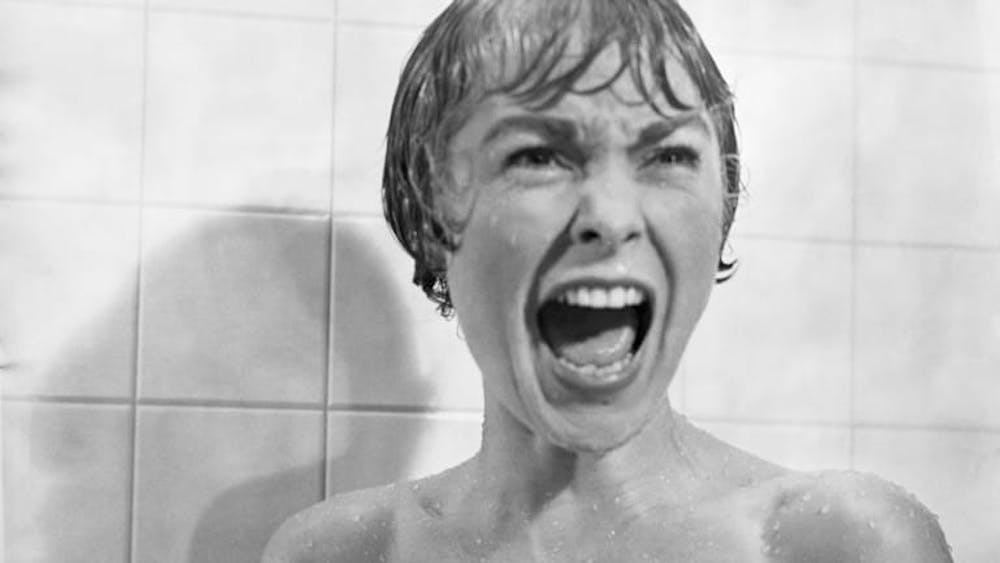The United States has an obsession with murder. If you take a quick look at Netflix’s front page or any other streaming service, it becomes obvious from the most popular titles: “Making a Murderer,” “The Sons of Sam: A Descent into Darkness,” “Unabomber: In His Own Words,” “Night Stalker: A Hunt for a Serial Killer” and “The Ted Bundy Tapes” to name just a few.
This country has often been critiqued for its near relentless displays of violence in popular media. Unlike its European counterparts who shy away from overtly brutal scenes, violence is accepted under the current rating system. In the United States, movies are rated using the MPAA system, or Motion Picture Association of America. Its most modern iteration appeared in 1968, following the removal of the strict Production Codes.
Prior to the late 1960s, the Production Code made it difficult for many filmmakers to fully express their creative visions. During this period, Hollywood was stringently censored. Think about Alfred Hitchcock’s famous film, “Psycho” (1960). In order to abide by the Production Code, Hitchcock chose to film in black and white, diminishing the most shocking scenes of the film. Even the choice to film a toilet flushing, the length of a kiss or a couple’s shared bed was seen as racy and appalling.
How did we suddenly transform from strict and pro-censorship into a society seemingly focused on violence? I doubt we could point to a single cause. Yet, perhaps, one such possibility was the combination of this momentous dissolution of the Production Code and the origins of serial crimes like the Manson Murders that simultaneously haunted and fascinated the American public.
From 1969 to the conclusion of Manson’s sentencing, horror flooded Hollywood and the country. Suddenly, the nation was carefully locking doors, and fear of the “other” was on the rise. Manson became a household name, and his image, with a carved swastika on his forehead, covered the front page of nearly every newspaper in the country. Copycat crimes, like Son of Sam, continued the Manson craze for decades.
Yet, while simultaneously horrified by these atrocities, people were intrigued. District Attorney Vincent Bugliosi’s “Helter Skelter,” chronicling the trial and investigations of the Manson family, became an instant best-seller. Television shows and movies followed. By 1972, the surgeon general wrote a report on the dangerous impact of televised violence, proof of violence’s ever-present rise in the media.
Why are we drawn to serial killers and crime? Is it ourselves we see in the depravity or even in the victims or perhaps how far human nature can extend beyond the perceived “norm”? I would argue that these options are not mutually exclusive. There is a horror in the humanity of crime, a “seeing yourself” in the worst of mankind. And, there is a revulsion from its rejection of universal moral codes.
Nor is violence an uncommon phenomenon in this country. The United States has the 32nd-highest rate of deaths from gun violence in the world, a rate that's only continuing to increase during the past few months of the pandemic. Furthermore, there are 393 million guns in the US alone, making it number one in the world for firearms per capita and holding more guns than people. Is the murder in the media simply a reflection of the culture of violence within the United States? Or, is, as the surgeon general argued in 1972, media influencing behavior, exacerbating violence to unprecedented levels?
Whatever the reason for its increase may be, murder in film and television does not seem to be declining any time soon. Driven by the consumer, violence in the media has, in fact, more than doubled since 1950, and that four-to-eight-episode true-crime docuseries craze on Netflix is growing more and more. The industry of violence has become an unshakeable pillar of American media, one that will continue to secure the foundation of Hollywood.
Get The Chronicle straight to your inbox
Signup for our weekly newsletter. Cancel at any time.

